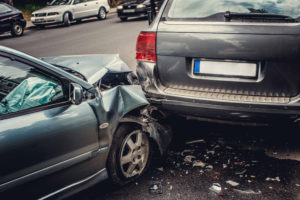If you’ve been in an auto accident in Cleveland you are facing a stressful and challenging situation. You probably have a lot of questions and concerns about what to do next and what laws and requirements may apply to your circumstances. The best thing to do is to contact a skilled Cleveland, Ohio, auto accident attorney at the Ohio Car Accident Lawyers to learn everything you need to know. Having said that, we can certainly get you started with some of the most important information about the laws and requirements in Cleveland, OH, auto accident claims, today.
Be Aware of the Statute of Limitations on Your Cleveland Auto Accident Claim
The statute of limitations on any personal injury claim refers to how much time you have to litigate the case after the incident occurs. In a Cleveland auto accident claim, that time limit is two years, both for injuries and property damage. That statute of limitations concerns how long you have to litigate the case, filing a lawsuit. When you pursue an auto accident claim with an auto insurance company, the statute of limitations does not apply to this claim. However, it does impact the claim. The auto insurance company is motivated to negotiate for a fair settlement in order to avoid litigation. If you run out the statute of limitations, then this motivation is no longer there, and you are unlikely to get a fair settlement. To avoid this situation, make sure that you get started on your claim quickly.
Ohio is a Comparative Fault State for Auto Accident Claims and Insurance Requirements
While some states use no-fault rules, and require all drivers to carry personal injury protection, other states have contributory negligence rules or comparative fault rules. Prior to 1980, Ohio was a contributory negligence state. This meant that if either driver was partly at fault, they were barred from recovering compensation, even if their percentage of fault was minimal. An auto accident victim could be only 10% at fault for the accident, but could still recover no compensation.
Fortunately, in 1980, this changed. Ohio is now a comparative fault state, which means that a driver who is less than 51% at fault is allowed to recover compensation from the other drivers auto insurance policy or through personal injury litigation. However, that compensation will be reduced by the driver’s percentage of fault. If you are 10% at fault, then you can only recover 90% of your damages. If you are 30% at fault, then you can only recover 70% of your damages. However, if you are 51% at fault, you cannot recover compensation. This technically makes Ohio a modified comparative fault state.
In the same way that the no-fault auto accident states require drivers to carry auto insurance policies that will cover their own damages, the comparative fault rules of Ohio impact the kind of auto insurance coverage you are required to carry. The difference is that because Ohio is a fault based state, you must carry liability coverage instead of personal injury protection.
The Specifics of Auto Insurance Requirements in Cleveland, OH
As mentioned, liability coverage is required for all drivers in Cleveland, Ohio. This coverage is necessary to pay for any damages that result from the accident, specifically those of the driver who carries the least percentage of fault. There are different types of liability in an accident, liability coverage for bodily injury or death for multiple persons in an accident, and liability coverage for property damage. Although many states follow comparative negligence rules and modified comparative negligence rules, they do not all have the same auto insurance requirements.
In Cleveland, Ohio, the minimum requirements are $25K is liability coverage for bodily injury or death of one person in an accident, $50K for liability coverage for bodily injury or death of multiple persons in an accident, and $25K for liability coverage for property damage in an accident. You are allowed to carry more liability coverage than this. In is wise to do so if you can, because it is not uncommon for the damages of an auto accident to end up being far greater than the limits of your auto insurance policy. You could end up being personally liable for the difference. You are also allowed to purchase UIM or uninsured/underinsured motorist coverage for such cases where your own damages exceed the coverage of the at fault driver or where the at fault driver does not have auto insurance.
Ohio drivers also have the option of meeting the financial responsibility requirements of the state by getting a certificate of proof of financial responsibility, instead of carrying auto insurance coverage, though this is not the most cost effective or common option. If you choose to purchase UIM coverage, then you can only purchase as much UIM coverage as you have liability coverage. If you wish to increase the UIM coverage, you will have to likewise increase the liability coverage.
Ohio is not a state where UIM coverage is required, as in some states, but it is highly recommended by the Ohio Car Accident Lawyers and other legal professionals. This is because although you can seek any uncovered damages from the responsible party through civil litigation, there is no guarantee that they will ever pay you, even if you are successful in getting a judgment against them. With UIM coverage, you can rest assured that your damages will be covered without all of the hassle of litigation.
Anyone who fails to carry auto insurance in Cleveland will face certain penalties for driving without coverage. For example, the person can have their license suspended for as much as 90 days, or even an entire year if there are multiple offenses. They will then have to pay as much $75 to get their license back for a first offense, and $500 for further offenses.
If you’ve been in an auto accident in Cleveland, Ohio, and you have further questions or concerns about how the law applies to your case, contact the compassionate Cleveland, OH car wreck lawyers at Ohio Car Accident Lawyers to learn more.





